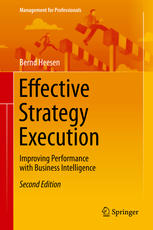

Most ebook files are in PDF format, so you can easily read them using various software such as Foxit Reader or directly on the Google Chrome browser.
Some ebook files are released by publishers in other formats such as .awz, .mobi, .epub, .fb2, etc. You may need to install specific software to read these formats on mobile/PC, such as Calibre.
Please read the tutorial at this link. https://ebooknice.com/page/post?id=faq
We offer FREE conversion to the popular formats you request; however, this may take some time. Therefore, right after payment, please email us, and we will try to provide the service as quickly as possible.
For some exceptional file formats or broken links (if any), please refrain from opening any disputes. Instead, email us first, and we will try to assist within a maximum of 6 hours.
EbookNice Team

Status:
Available0.0
0 reviewsThis book demonstrates how an improved strategic management approach, leveraging established management concepts in conjunction with the innovative technology solutions offered by business intelligence, can lead to better performance. It presents the three main barriers to effective strategy execution and explains how they can be overcome. Creating a shared understanding of the strategy at all levels of the organization using a Value ScorecardTM and following the Strategic Alignment ProcessTM allow organizations to measure and monitor performance. Strategic Alignment Remote ControlTM is presented as the ultimate tool for managers to remain in control of their business.
Seven case studies from different industries across the globe provide examples of how the organizational performance can be improved. They include companies like Daimler, Tetra-Pak, Würth, Germany's Federal Employment Agency, the city of Aix-Les-Bains, and Giesecke & Devrient. Additional examples from organizations like Disney, Marriott, Volkswagen, Avis, FedEx, and Harrahs help to demonstrate how applying the concepts introduced adds unique value.
The second edition of this book has been updated and improved. Additionally it includes a separate section on decision-making under uncertainty and the results of a survey on the adoption of business intelligence.